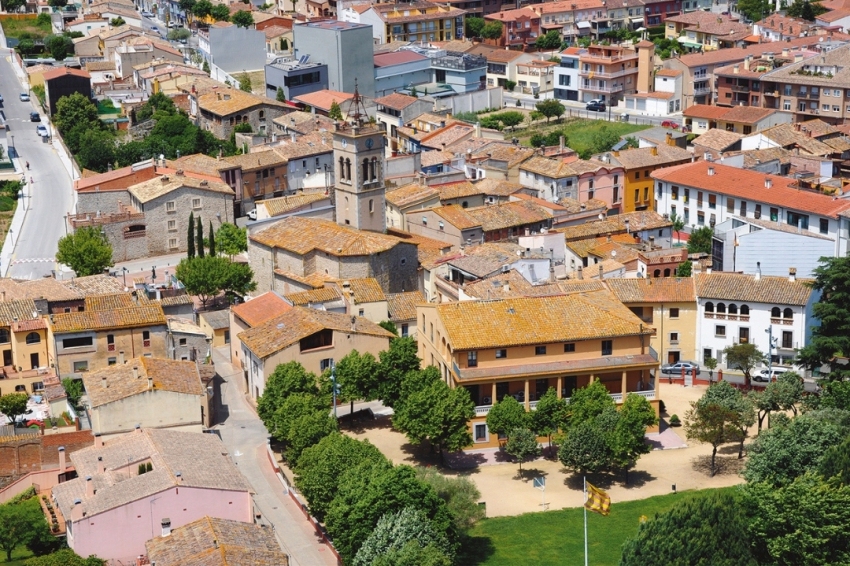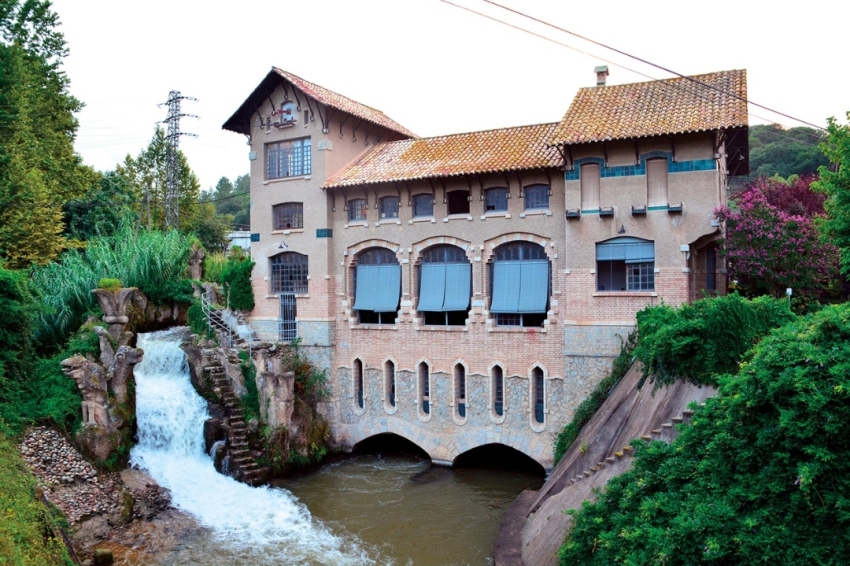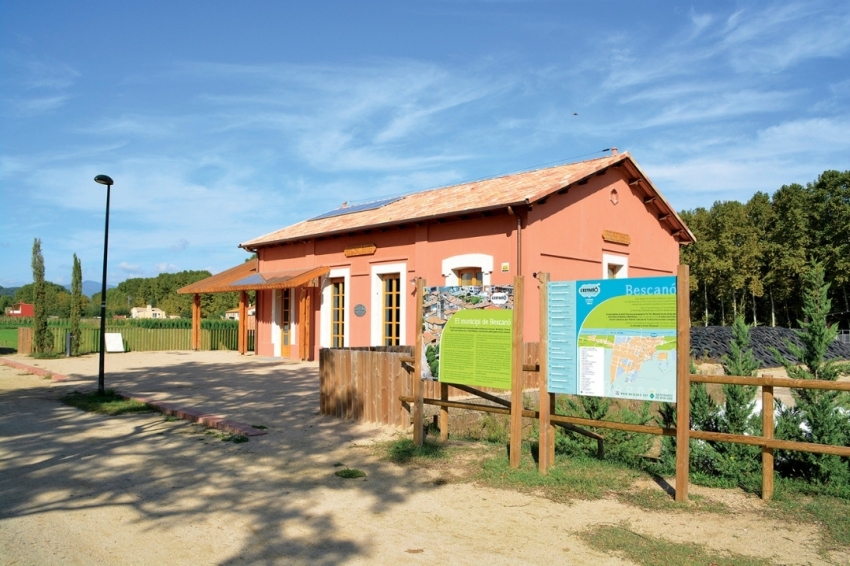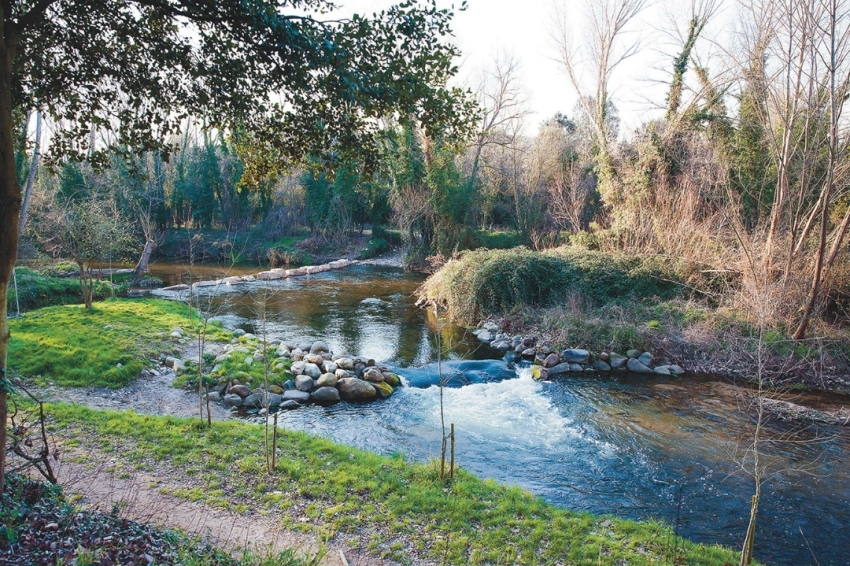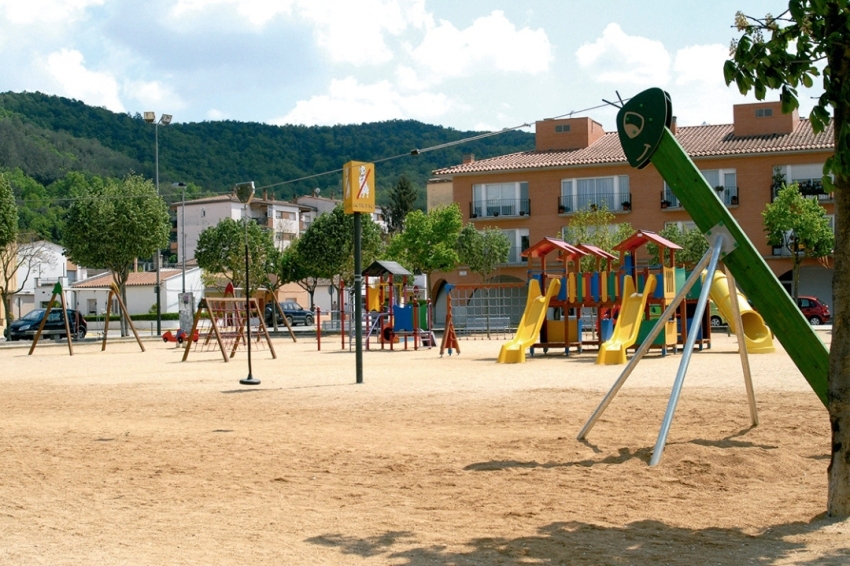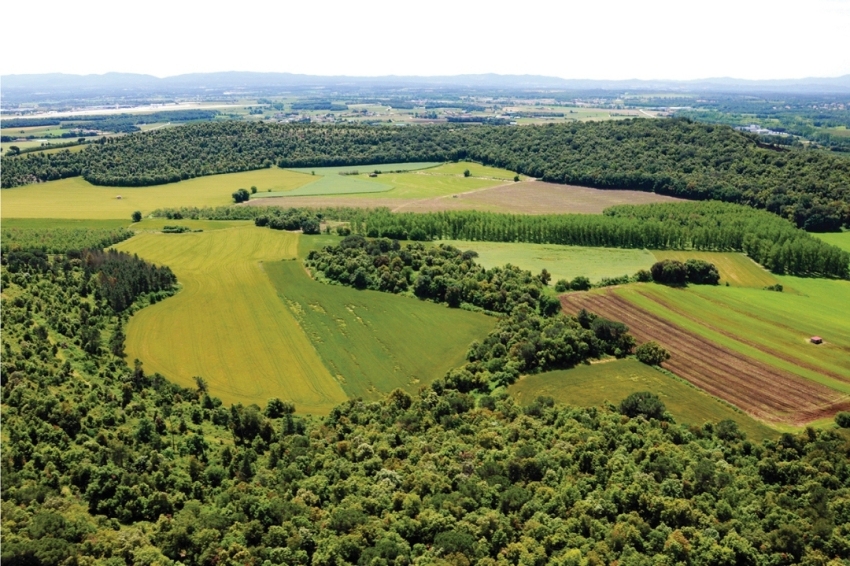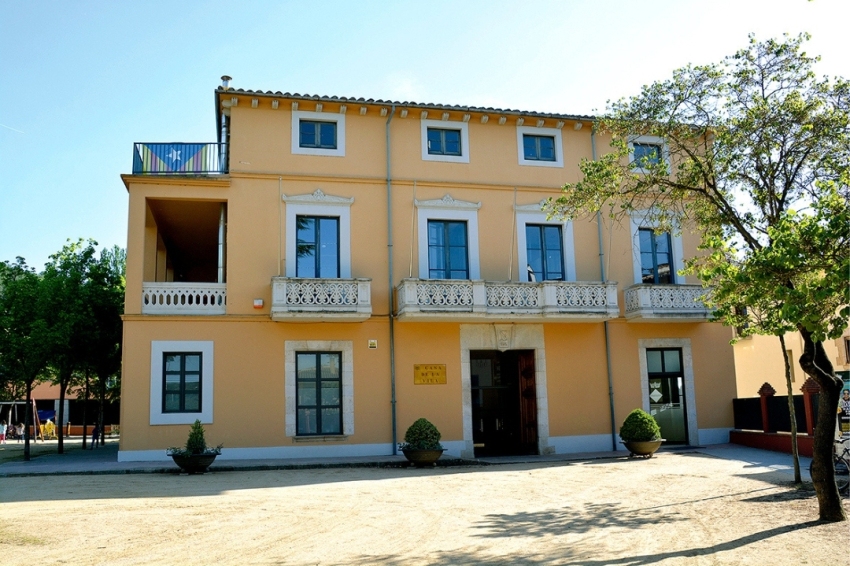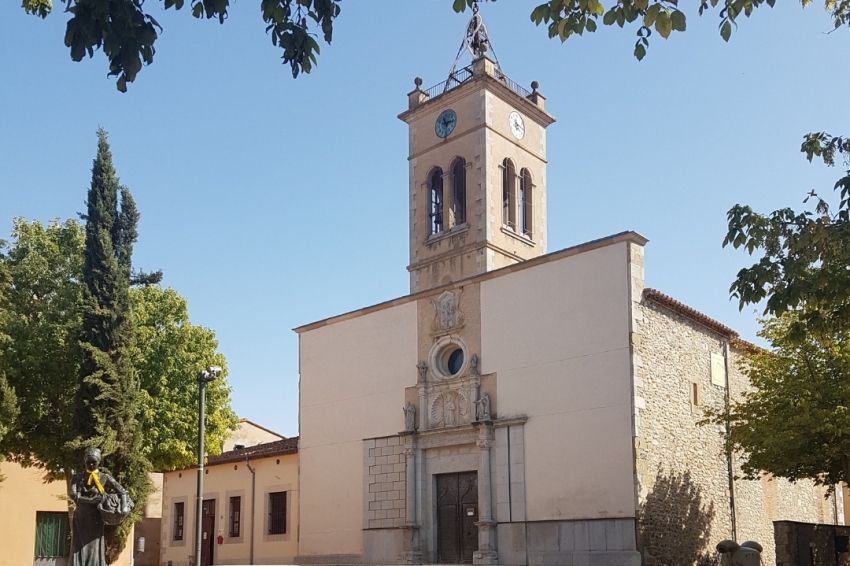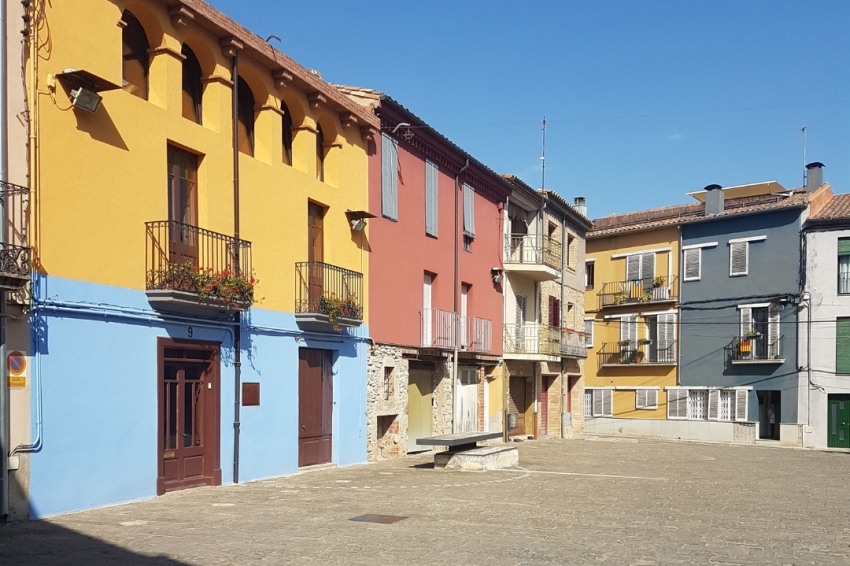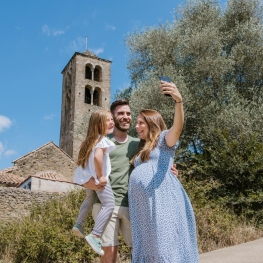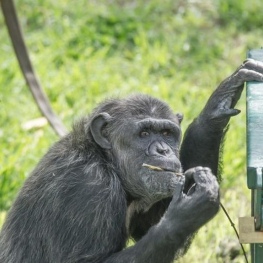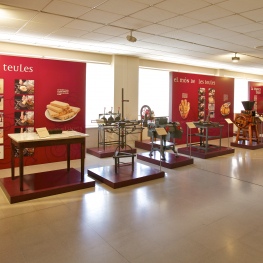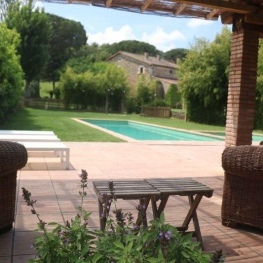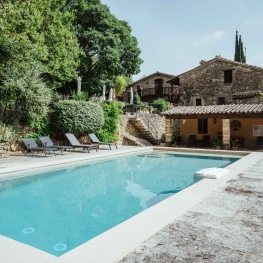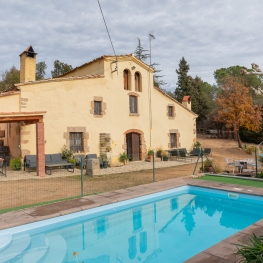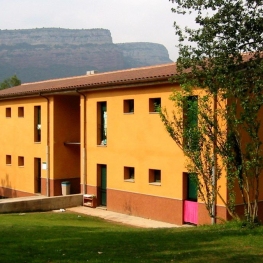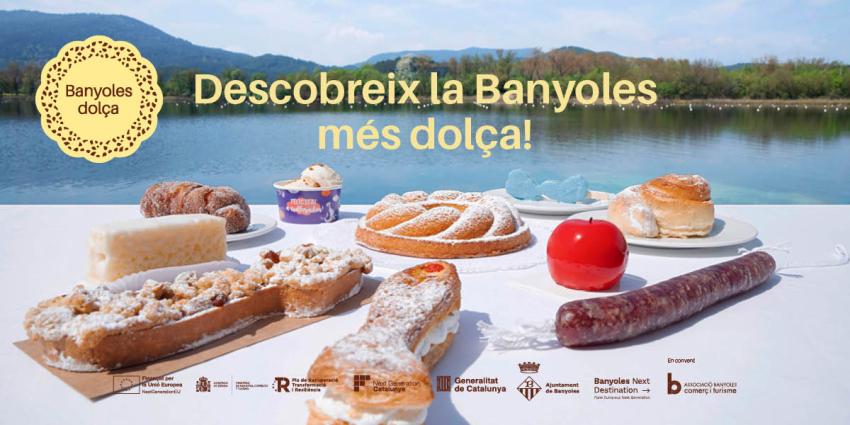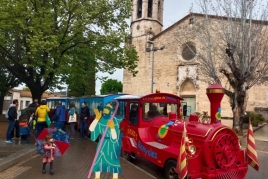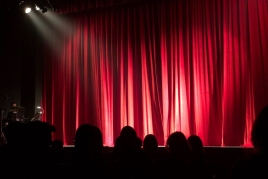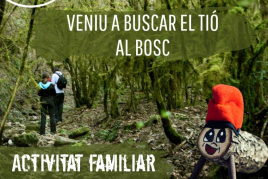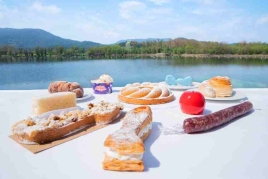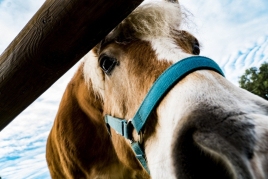Bescanó
The municipality of Bescanó is located on the right bank of the River Ter, in the west of the Gironès region. It occupies 36 km² of the eastern foothills of the Guilleries. The villages of Bescanó, Estanyol, Montfullà, and Vilanna share a Mediterranean landscape of wooded hills.
It is bordered by: the Ter River to the north; the Onyar headwaters, the Crosa volcano, and the Selva plain to the south; the Girona plain to the east; and the Trullàs plain to the west.
The rural environment preserves its agricultural past: fertile fields on the plain, hills with dense forest, and some urbanized areas. The population exceeds 5,000; many people live in Bescanó and commute to work in the Girona area. The town is growing, and a modern and dynamic industrial and service economy is developing.
History
The archaeological remains reveal a rich and diverse past, including Paleolithic settlements on Mount Rigau and the Roman villa of Montfullà; the Iberian settlement and silo field of Estanyol; medieval castles of Bescanó; and pre-Romanesque chapels and farmhouses of Vilanna. Iberian place names such as Taceram (Ter) and Visigothic ones such as the Wualard farmhouse in Trullars survive. During the High Middle Ages, the medieval parishes were structured around four Roman villas: Vilanna, Montfullà, Estanyol, and Bescanó.
The county domain remains in Montfullà and Bescanó, but the indebtedness of the kings causes the bourgeois of Girona to buy rents and found farmhouses where they will take refuge from the famine of 1333 and the black plague of 1348.
The 15th century was a time of extravagance. Buildings were damaged by the earthquakes of 1427. The new European states exerted pressure on Catalonia. Girona was fortified to guard the entrance to the peninsula. Bescanó suffered the constant sieges of the city, its defense, destruction, and the drain of tributes demanded by both the city and the besieged enemies.
During the Carlist Wars in Vilanna, the summary executions of Carlists took place (1851), precipitating the abolition of the Mossos d'Esquadra (Catalan police). Between the Second and Third Carlist Wars, public schools were established in Bescanó and Estanyol.
At the end of the 19th century, Bescanó began to emerge from the Ancien Régime: the national highway was built in 1880, and the Girona - Olot railway in 1893. Grober and Bonmatí built bridges over the River Ter to access the textile factories, a symbol of the socioeconomic change and progress of the 20th century.
The civil war breaks out, and anti-fascist committees are formed in Bescanó and Estanyol to take on the tasks of municipal defense and government until they gain political control of the city council.
In the 1960s, meat processing plants, shops, and workshops developed, attracting immigrants from the surrounding area. The Susqueda reservoir makes the Olot train collapse. A public nursery replaced the factory's nursery. The area's expansion grew, and the first apartments were built in the working-class neighborhood.
Since the 1980s, the economic momentum of the Girona metropolitan area has been leveraged, resulting in sustained and sustainable urban and population growth, equipped with all the public services it can have and maintain.
Places of interest
The Tower of Bescanó
A fortified house with a square floor plan and Gothic and Romanesque windows on the main floor. It was the residence of the feudal lords. During the 19th century, the Benages, merchants and landowners, prospered, becoming noble through marriage (Marquis of Garcilán) and papal titles (Count of Berenguer).
Church of Sant Llorenç
The first reference to Bescanó mentions the church, probably rebuilt on the site of a pre-Romanesque chapel. The nave has Gothic ribs and a Baroque façade (1744–1790). The old rectory (1953) and the new rectory (1704) form the backbone of the old town.
Municipal Ethnological Museum
Permanent exhibition of ancient tools and objects. At the Casa de la Volta. Tours by appointment.
Castrum of Baschono
Inherited by Ot de Montcada, a troubadour knight. Bescanó Castle (1276) is probably the fortified building, with a walled courtyard and Gothic windows, known as Favars Castle (1179 by Arnaldi de Fauars and Berengarii de Fauars), later called Foix or Castelló Castle. It has been a farmhouse for centuries.
Castlelevell Castle
Ruins of Puig del Castell, between the Viader Vell farmhouse (1288) and the Ferrer - Pagès or Fàbrega farmhouse (1213), which were the mayors.
Windmill
Flour mill, farmhouse, and administrative and residential complex for feudal landowners. In the 19th century, the Benages family, Counts of Berenger, renovated the Hospital farmhouse (1603) into a French-style summer house. Attached to the mansion, they built the private chapel and cenotaph of Our Lady of the Conception. This Neo-Romanesque brick building (1879) has an octagonal floor plan and a dome.
Gròber Textile Factory
The water rights of the Benages mill were transferred to the ribbon and button factory. The industrial complex began with the construction of the first hydroelectric plant and the first bridge over the Ter River (1902). The non-colonial production system, which employed hundreds of women workers, reconverted and modernized the economy and society of Bescanó, which had stagnated under the old regime. The Unión Cinema and a nursery service staffed by Vetlladoras nuns were built.
Llibant Boat Pass
The mill boat crossed the Ter three centuries ago. At the beginning of the 20th century, the floods swept away the factory bridge, and the rowboats, cable cars, and boatmen returned: in Roca, in Pere Petit... The flood of 1940, which reached Carrer de Dalt, swept away boats and houses. The last boatman, in Varisto, did not cross the river until 1974. The boatman's hostel remained at the foot of the landing stage.
Nearby routes
See all routes »- Route of Carrilet I of Olot in Girona
- Les Masies Greenway Route (a 2.9 km)
- Route of the fountains in Sant Gregori (a 3.1 km)
- Walking around the Volcano of la Banya… (a 3.1 km)
- A walk through the meadows and the… (a 4.1 km)
What to do
Fundació Mona
Riudellots de la Selva (a 9.9 Km)The Mona Foundation is a non-profit entity created to put an end…
Museu Trias de la Galeta
Santa Coloma de Farners (a 13.3 Km)The Trias de la Galeta museum is the fruit of the Trias…
Where to sleep
Cal Rei Vinyes
Celrà (a 12.8 Km)Detached farmhouse ideal for groups on the outskirts of the town of…
Hotel Rural La Sala de Camós
Girona (a 13.5 Km)Enjoy a surprising destination surrounded by an extraordinary landscape. An ideal place…
Can Baldiri
Santa Coloma de Farners (a 11.7 Km)Currently Can Baldiri is a home for tourist use by groups of…
Casa de colònies La Cinglera, Fundesplai
Vilanova de Sau (a 28.3 Km)La Cinglera is located in the Vilanova de Sau municipality. It is…

